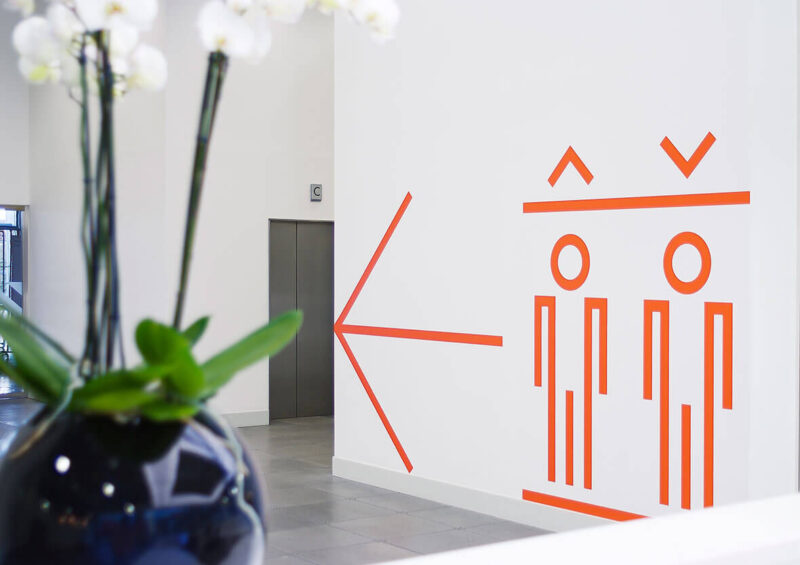
SPMD environmental wayfinding design is evolving beyond mere signage and directional systems. Increasingly, it incorporates artistic expression to enhance user experience, establish identity, and improve spatial clarity. Within this framework, custom art curation plays a pivotal role—not as decoration, but as an integrated component of how people navigate and relate to a space. Whether in corporate campuses, public institutions, healthcare environments, or mixed-use developments, curated artwork contributes to a layered wayfinding strategy that speaks to both function and feeling.
Art Curation as Spatial Storytelling
Wayfinding systems are designed to guide people effectively and art adds an emotional & cultural dimension. Rather than following a generic template, curators begin by researching artists whose style, message, and material practice align with the project’s spatial objectives, community values, and brand identity. This research process ensures that the resulting artworks do more than beautify—they narrate the essence of a place.
By collaborating with artists early in the process, curators and design teams can integrate artworks that reflect the physical flow and architectural rhythm of the site. This strategic positioning not only enriches visual engagement but also reinforces intuitive movement through the space.
Collaboration Across Disciplines
One of the most critical elements of successful custom art curation in wayfinding design is collaboration. The process requires close coordination between artists, architects, interior designers, and project stakeholders. Curators serve as the bridge—translating spatial needs and branding goals into artistic possibilities.

During concept development, curators work with artists to ensure ideas align with the technical and functional parameters of the space. Materials, scale, durability, and accessibility are just as important as artistic vision. This guarantees that the artworks are not only aesthetically arresting but also pragmatically executable within the constraints of architectural design and construction logistics.
Further, curators help artists navigate engineering constraints and fabrication techniques. Whether the artwork is a large-scale mural, an interactive installation, or a subtle embedded element, each piece must complement the wayfinding system’s goals—clarity, coherence, and user comfort.
Guided by Intent: The Design Process
In environmental wayfinding design, intentionality matters. Curators play a vital role in ensuring that every artwork placed in the environment has purpose and meaning. Throughout the design process, curators guide artists in developing concepts that resonate with the space’s intended use and emotional tone.
For example, a healthcare setting may prioritize calm, contemplative works that reduce stress and supports healing. A corporate space may feature dynamic, brand-aligned visuals that inspire innovation. The curator ensures the artwork supports these goals while contributing to intuitive navigation cues. Art can act as subtle landmarks or memory points that help people find their way, even in complex environments.
Installation Oversight and Final Integration
The culmination of the custom art curation process is the installation phase—where concept becomes tangible. Curators often remain closely involved to oversee the placement and integration of artworks within the architectural and graphic elements of the wayfinding system. This ensures cohesion and respects the site’s operational constraints, safety protocols, and visual balance.
Installation isn’t merely about hanging art on a wall—it’s about ensuring that each piece lives harmoniously within the flow of the environment, contributing to both the functional clarity of wayfinding and the expressive identity of the space.
Conclusion
As environments become more human-centered, the role of custom art curation in SPMD environmental wayfinding design continues to grow. Art enriches navigation by engaging the senses, evoking emotion, and establishing a sense of place. Through careful research, collaborative development, and strategic integration, curated artworks help transform functional pathways into meaningful experiences. When art and design work in tandem, wayfinding becomes more than a tool—it becomes a journey shaped by vision, voice, and place.


